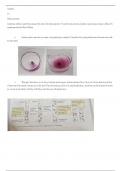Resumen
Summary Coordinated Science Chemistry IGCSE
- Institución
- Bachillerato
This document provides all of the content you need to know if you are taking the IGCSE coordinated science exam. It is a very big document as it is a very difficult and wide subject although it is summarised in order to understand it. This only includes the coordinated content and not the combined ...
[Mostrar más]




